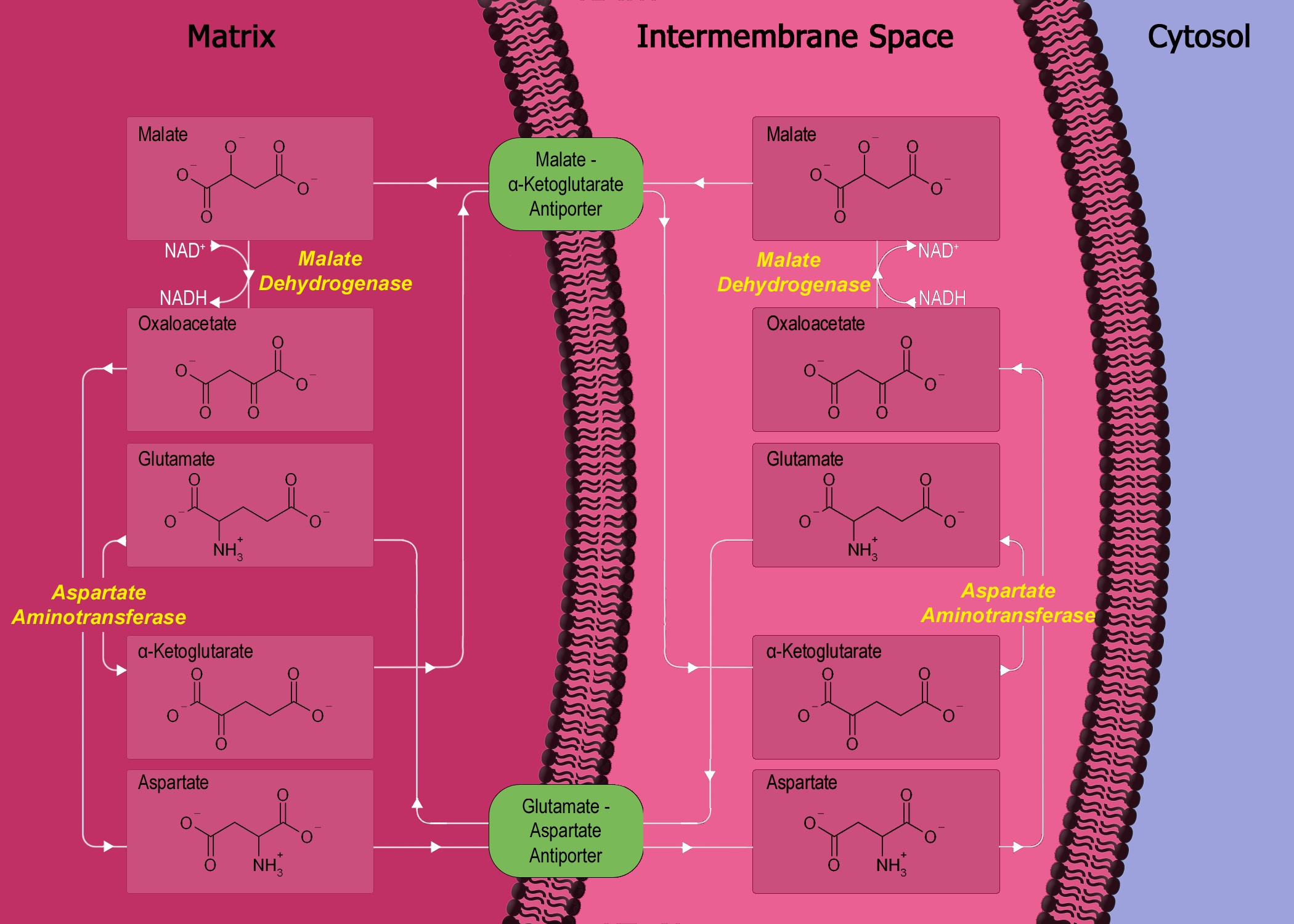|
Malate–aspartate Shuttle
The malate–aspartate shuttle (sometimes simply the malate shuttle) is a biochemical system for translocating electrons produced during glycolysis across the semipermeable inner membrane of the mitochondrion for oxidative phosphorylation in eukaryotes. These electrons enter the electron transport chain of the mitochondria via reduction equivalents to generate ATP. The shuttle system is required because the mitochondrial inner membrane is impermeable to NADH, the primary reducing equivalent of the electron transport chain. To circumvent this, malate carries the reducing equivalents across the membrane. Components The shuttle consists of four protein parts: *malate dehydrogenase in the mitochondrial matrix and intermembrane space. *aspartate aminotransferase in the mitochondrial matrix and intermembrane space. * malate-alpha-ketoglutarate antiporter in the inner membrane. * glutamate-aspartate antiporter in the inner membrane. Mechanism The primary enzyme in the malate–aspar ... [...More Info...] [...Related Items...] OR: [Wikipedia] [Google] [Baidu] |
Mitochondrial 2-oxoglutarate/malate Carrier Protein
Mitochondrial 2-oxoglutarate/malate carrier protein is a protein that in humans is encoded by the ''SLC25A11'' gene. Inactivating mutations in this gene predispose to Metastasis, metastasic paraganglioma. See also * Solute carrier family References Further reading * * * * * * * * Solute carrier family {{membrane-protein-stub ... [...More Info...] [...Related Items...] OR: [Wikipedia] [Google] [Baidu] |
